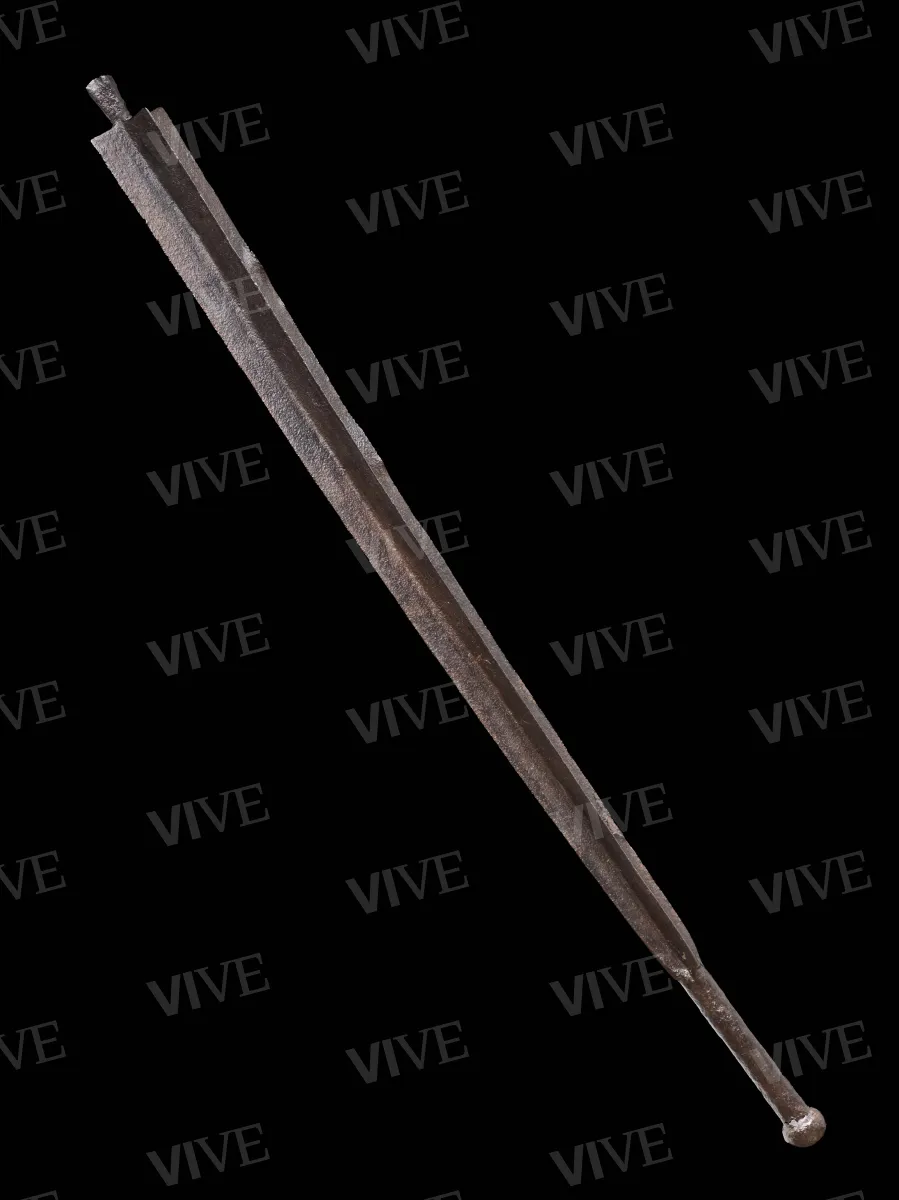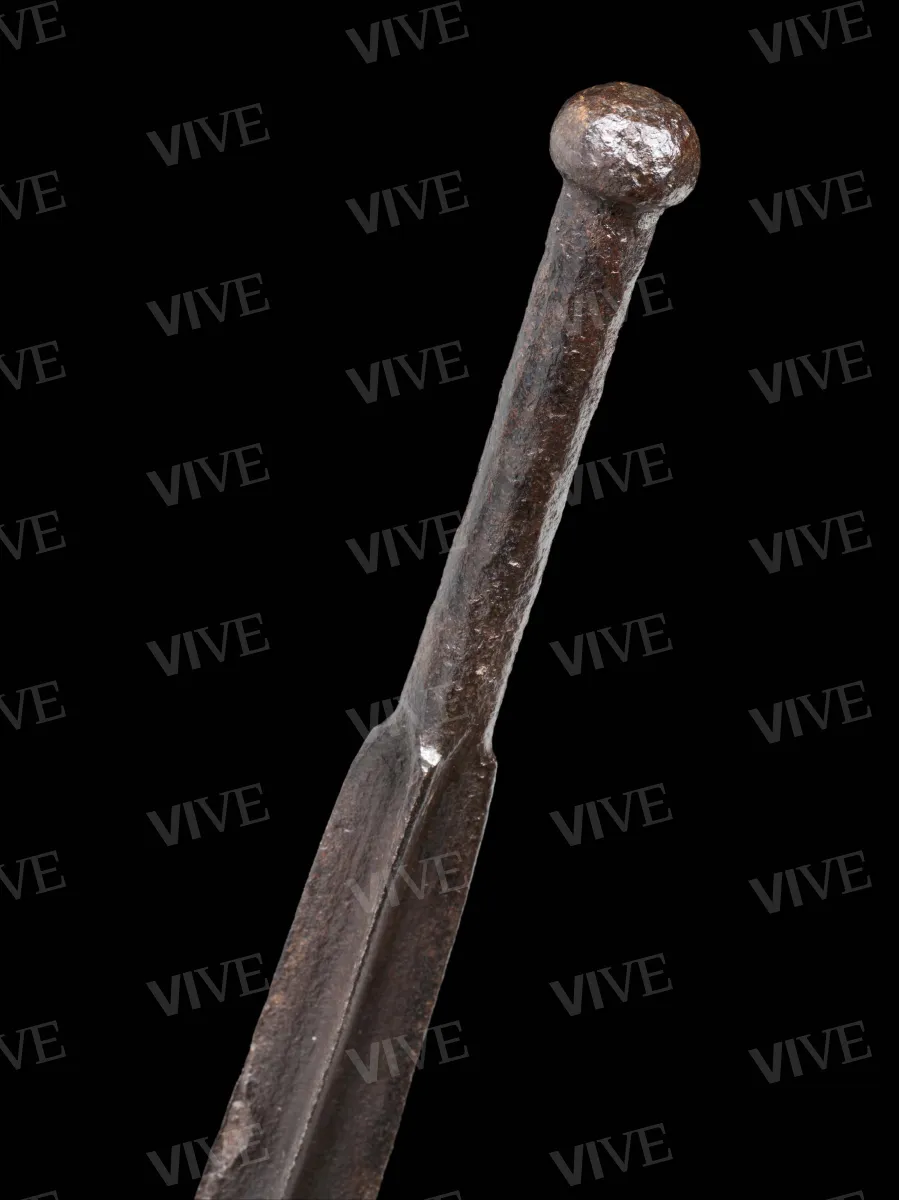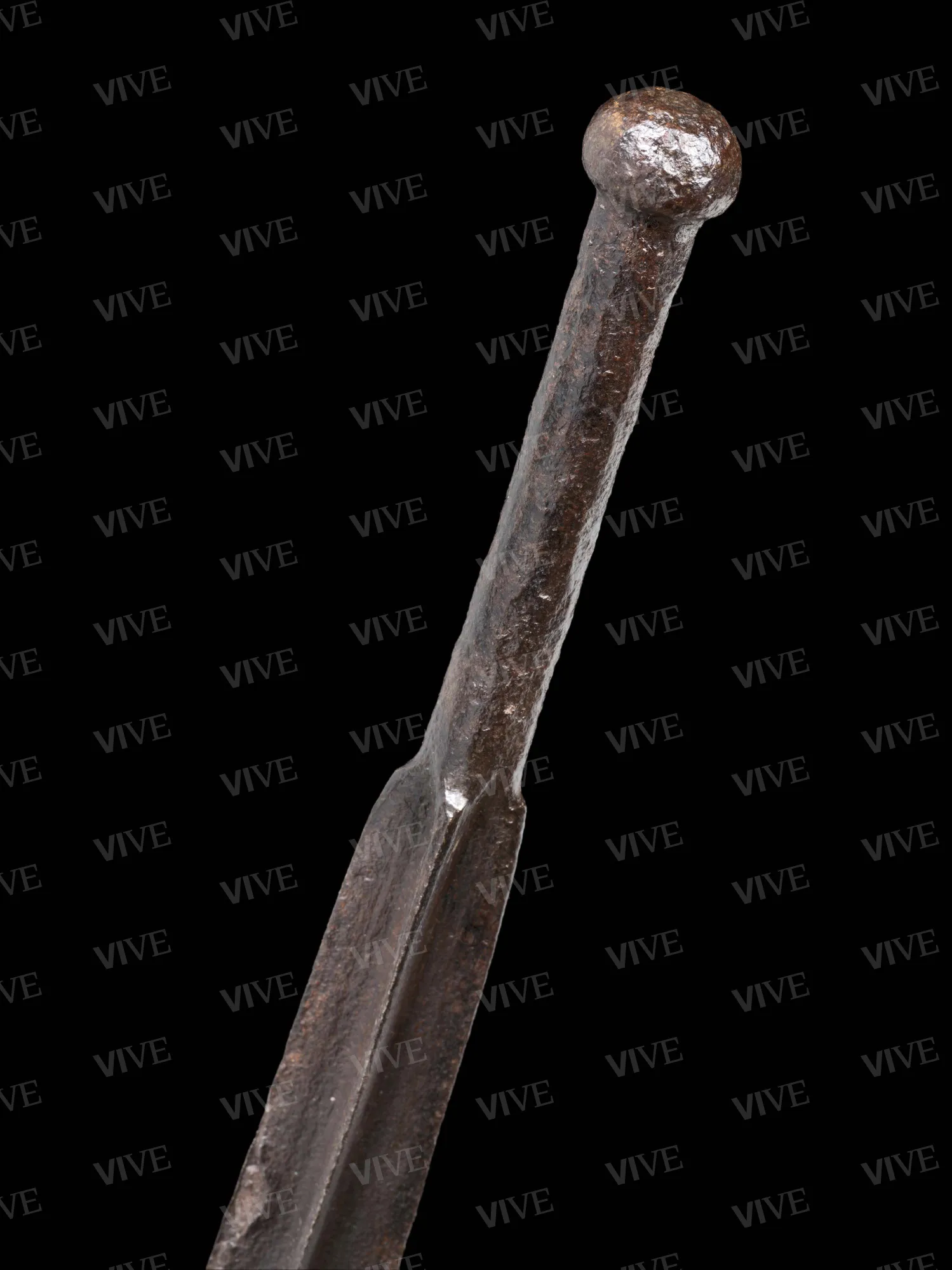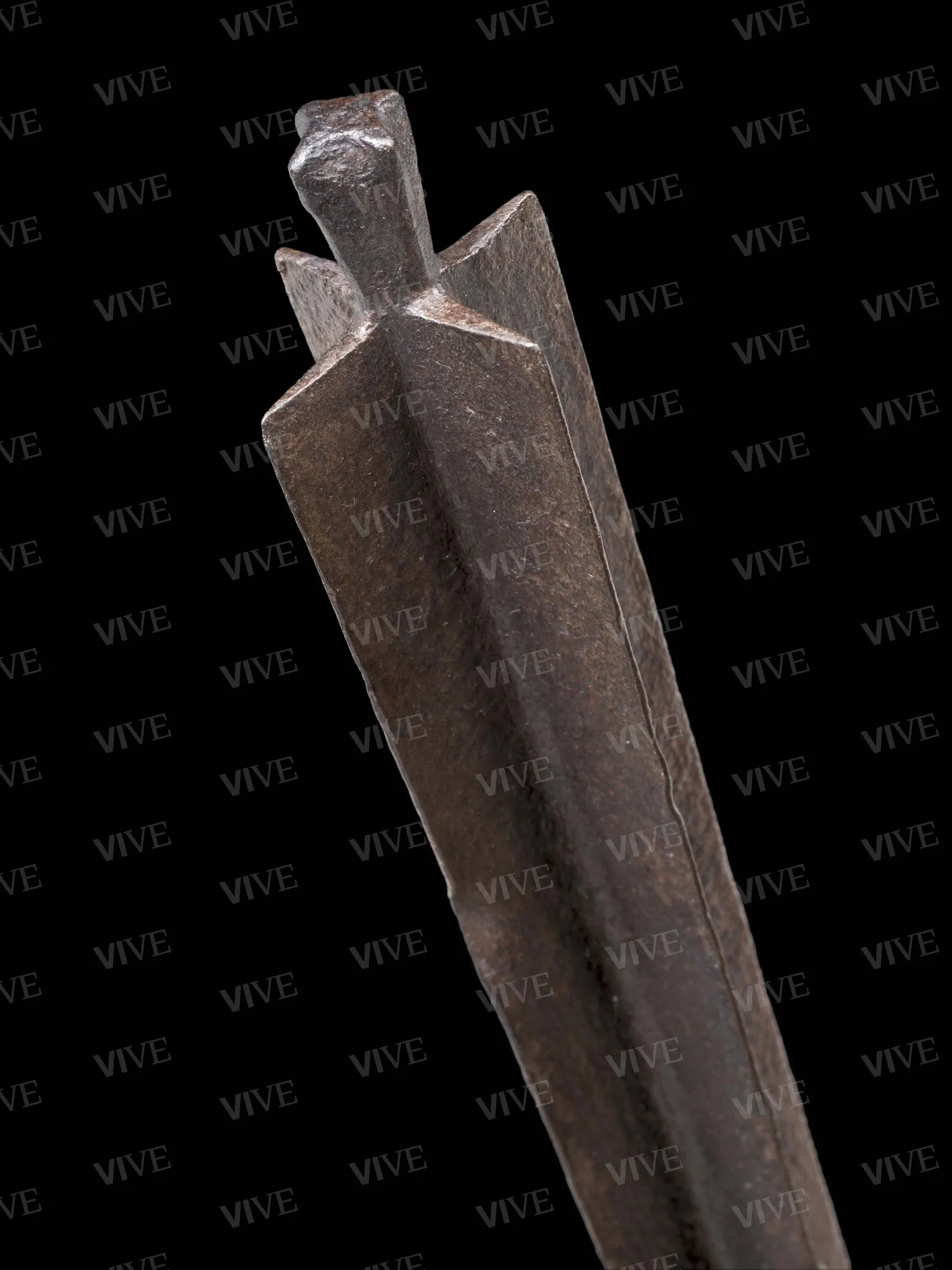Mace
Italian production First half of 14th century
Iron mace with four slightly curved ribs that broaden toward the tip, prolonged to the round grip which ends in a spherical knob. A small quadrangular appendage is attached to the tip.
Iron mace with four slightly curved ribs that broaden toward the tip, prolonged to the round grip which ends in a spherical knob. A small quadrangular appendage is attached to the tip.
Details of work
Catalog entry
Iron mace of four crossed ribs, slightly curved and broader toward the tip, prolonged to the round grip ending in a spherical knob. A small truncated square-shelled inverted pyramid appendage is attached to the summit. Nolfo di Carpegna states that the mace is probably the only specimen that has come down to us of a type of bludgeoning thanks to iconographic evidence, including the mace brandished in the Allegory of the Fortress in the Scrovegni Chapel in Padua (1303–1305) and the mace depicted in the hands of a warrior in the predella by Giovanni di Bartolomeo Cristiani (c. 1367–1398) now in the Metropolitan Museum in New York (12.41.1) with Saint Lucy before the prefect Pascario. Further significant iconographic evidence is found in the frescoes of Sant’Abbondio in Como (di Carpegna 1960). In addition to these there are those mentioned by Boccia, Coelho (1975, fig. 38) in a miniature from the Bolognese codex (datable to 1320–1330) now preserved in the Biblioteca Riccardiana in Florence and the tomb slab of Colaccio Beccadelli (1341) by Bettino da Bologna in the church of Santi Nicola e Domenico in Imola (Boccia, Coelho 1975, 329), although the latter type has been traced to the Byzantine area by Scalini (2007, 121). Boccia, Coelho (1975) also associate our mace with the more complex mace in the third panel depicting The Martyrdom of Saint Sebastian by Nicoletto Semitecolo at the Padua Duomo (1367).
Chiara Paniccia
Entry published on 12 February 2025
State of conservation
Fair.
Provenance
Perugia, Cappelli Collection;
later Collezione Odescalchi.
Exhibition history
Rome, Palazzo Venezia, Antiche armi dal sec. IX al XVIII già Collezione Odescalchi, May–July 1969;
Rome, Museo di Palazzo Venezia, Belle e terribili. La Collezione Odescalchi. Armi bianche e da fuoco, December 18, 2002–March 23, 2003;
Rome, Castel Sant’Angelo; Palazzo Venezia, Armi e potere nell’Europa del Rinascimento, July 26–November 11, 2018.
References
di Carpegna Nolfo (a cura di), Antiche armi dal sec. IX al XVIII già Collezione Odescalchi, catalogo della mostra (Roma, Palazzo Venezia, maggio-luglio 1969), Roma 1969, p. 59;
Boccia Lionello, Coelho Eduardo, Armi bianche italiane, Milano 1975, p. 329;
Barberini Maria Giulia (a cura di), Belle e terribili. La Collezione Odescalchi. Armi bianche e da fuoco, catalogo della mostra (Roma, Museo di Palazzo Venezia, 18 dicembre 2002-23 marzo 2003), Roma 2002, p. 13;
Scalini, 16. Maesto ignoto, Costantinopoli o Bologna (?). Testa di mazza, in Scalini Mario (a cura di), A bon droyt. Spade di uomini liberi, cavalieri e santi. Epées d'hommes libres chevaliers et saints, catalogo della mostra (Aosta, Museo Archeologico Nazionale, 29 giugno-4 novembre 2007), Cinisello Balsamo 2007, p. 121;
Scalini, I.6 Mazza da guerra, in Scalini Mario (a cura di), Armi e potere nell'Europa del Rinascimento, catalogo della mostra (Roma, Castel Sant'Angelo; Palazzo Venezia, 26 luglio-11 novembre 2018), Cinisello Balsamo 2018, p. 52.
















